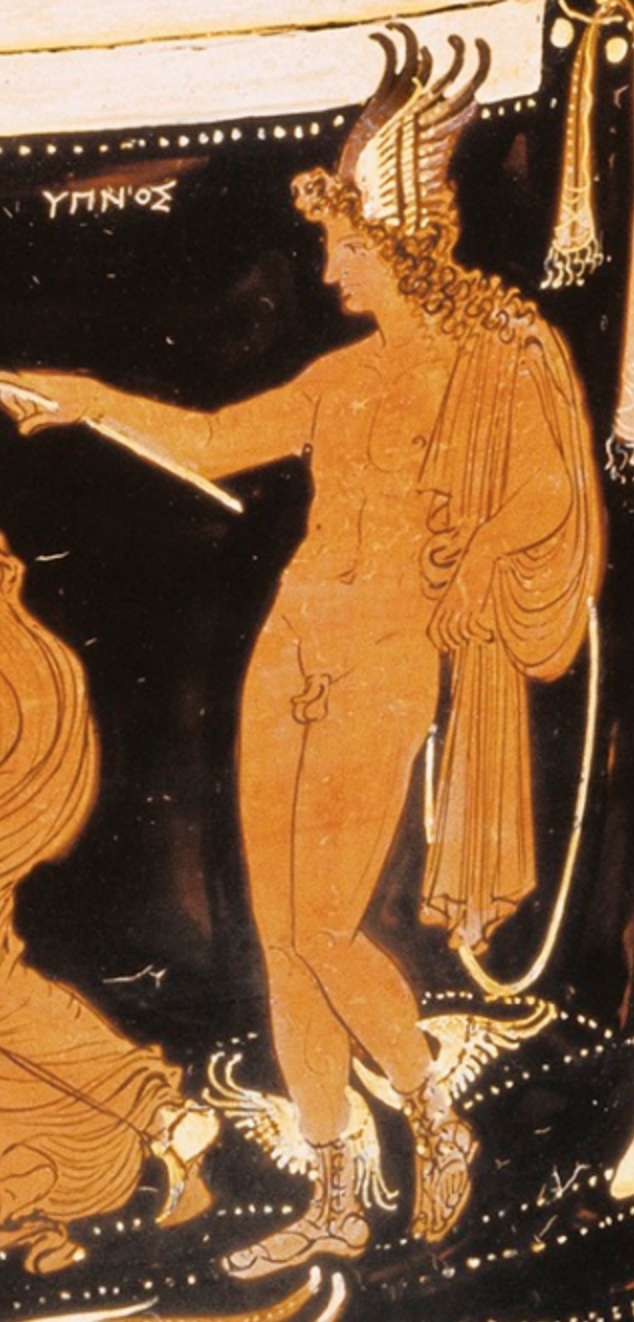Calloway Scott // Among the civilizations which ringed the shores of the antique Mediterranean (and beyond), it was quite well known that dreams carried with them portents of the future events. The cuneiform tablets of ancient Sumer and Assyria speak of the nocturnal intercourse of royals and gods, promising success in war. The epics of Homer, both the Iliad and Odyssey, tell us that dreams come from direct Zeus, although these fleeting phenomena may give true or false intimations of things to come. Herodotus peppers his History of the known world with the dreams of kings and tyrants, even if only to underscore how easily such divine visions could mislead. Still, for Sumerians and Greeks alike, not all dreams were regarded as provident. The gods disclosed the future only to their chosen favorites, kings, and this in turn lent legitimation to the king’s monopoly upon charismatic authority. Across cultures there ran a tidy political economy between gods and kings funded by the stuff of dreams. Beyond these shared cultural strategies of dreaming lay a shared experiential nature of dreaming; dreams were conceived of as external events or visitations occurring to a sleeper, not interior processes of soul or mind.
Sometime within the 5th century BCE a break in this conception of dreams occurred. The medical writings of the Hippocratic corpus take note of their patients’ sleeping and dreaming habits. In the effort to create reliable signs, the quality and kind of sleep and dreams offered a new diagnostic tool, making connections between the jagged and disordered dreams one experiences with fevers. Uncoupled from any divine or external origin, dreams began to appear within the symptomological lists found within the Hippocratic Epidemics and other texts as essential clues for the physician.
Yet one medical treatise presses this new, bodily-oriented interest in dreams considerably further. Encroaching on the space of the traditional seer or dream interpreter, the author of Regimen 4, also known as On Dreams, scrutinizes dream contents for what they might disclose about the interior state of the dreamer’s body. His purpose in appropriating for medicine the tools of the dream interpreter are ingenious: the overarching aim of the 4 “books” comprising the composite treatise Regimen is to demonstrate and defend his discovery of “prodiagnosis.” For the author of Regimen, “prodiagnosis” is the exercise of careful self-surveillance—conjoined with a comprehensive knowledge of one’s elemental and humoral constitution—which allows one to “know in advance” when the body’s healthful balance has fallen askew before displaying symptoms of true illness. For the author, dreams play a new and important role in this diagnostic effort, for
When the body is at rest, the soul, being set in motion and awake, administers her own household, and of herself performs all the acts of the body. For the body when asleep has no perception; but the soul when awake has cognizance of all things—sees what is visible, hears what is audible, walks, touches, feels pain, ponders (Reg. 4.1).
That is, the author imagines that the soul is 1) quite separate from the body and 2) during sleep, is attuned to the interior state of the body without distraction. Dreams, then, offer an unparalleled point of access for knowing the condition of the body that the soul cannot perceive during the day. The rest of the text offers a neatly organized set of interpretations of dreams as they forewarn us about various illnesses, utilizing a relatively simplistic analogical framework of the humors and the relationship between the cosmos and human body. For instance, a dream about torrential rains indicates a growing abundance of moisture within the body, which ought to be counterbalanced by a “drying” regimen of exercises and foods. Similarly, dreams about astronomical bodies like the sun, moon, stars and planets, which are clear and follow their normal orbits signify good bodily order and that one ought to maintain current dietary and exercise habits. Yet, if one should perceive heavenly bodies to be obscured by cloud or mist, it is a clear indication that some kind of disorder has occurred within the body (an excess of phlegm, for instance). The treatise goes on to analyze and interpret a fascinating variety of dreams—including those involving the gods and the dead—even as it admits that some dreams are, indeed, the divine in their origins and best left to the knowledgeable seer. Yet, in the breadth of his dream hermeneutics, the Regimen author’s aim to carve away some of the ancient dream-interpreter “market” is clear.
More fundamentally, once the soul has been identified as the seat of dreaming (or the principal seat of intellection whereby dreams are apprehended), the relationship between dreams, the soul, and (medical) foreknowledge becomes an important and abiding question in ancient science. Aristotle took up the question at length (without a completely clear conclusion) in his treatise On Prophecy in Sleep, and the predictive value of dreams was an essential feature in Stoic cosmological thought. But once broached in the Hippocratic texts, the specific issue of the existence of medically predictive dreams never vanished and was taken up by Herophilus, Erasistratus, and all the later medical sects. Galen (or one of his imitators) was forced to tackle the issue in the text On Diagnosis in Dreams, which includes reports from other medical authorities of dreams which proved to hold prognostic value. The main worry for these later thinkers, stressed by Rufus of Ephesus, who acknowledged the existence of these dreams, was the difficulty in landing on the proper criteria for distinguishing the provident dream from the non, sorting the silver from the dross. In opening the realm of dreams to the practicing physician, these thinkers appropriated a tool with weighty explanatory power drawn from the deeply entrenched and widely held belief in the existence of divination. At the same time, the attempt to generate rigorous criteria to usefully identify such dreams never wholly succeeded.
Featured Image: Hypnos from Apulian Red-Figure Loutrophoros, via Getty Museum Collection.

